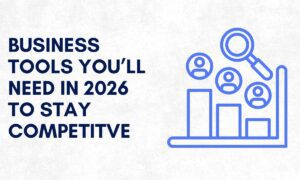Why this matters in 2025
Attackers and defenders are both using AI. Law-enforcement and threat reports show organized crime and state actors scaling phishing, impersonation, and content operations with AI, which raises the bar for detection. Meanwhile, enterprises that pair AI analytics with sound controls reduce mean time to detect and respond, and lower breach costs compared with peers that adopt AI without governance.
How AI improves cyber defense today
1) Faster, earlier detection
Modern models learn baselines for users, hosts, and services, then flag subtle anomalies in authentication, lateral movement, or data flows that signature tools miss. Recent threat-landscape analyses emphasize that earlier anomaly spotting and basic hygiene still decide outcomes for most incidents.
Example: AI-driven user and entity behavior analytics (UEBA) suppresses commodity alert noise and elevates outliers like unusual OAuth grants or atypical S3 access patterns for human review. Industry field reports in 2025 show SOC teams see measurable workflow gains when pairing AI triage with analyst oversight.
2) Intelligent triage and response
AI agents can correlate multi-telemetry alerts, enrich with threat intel, and recommend safe actions such as isolating an endpoint or revoking tokens. CISA’s AI materials encourage building around data controls and stepwise automation to keep the human in the loop. cisa.gov+1
3) Proactive threat hunting
Generative models help create hypotheses, write quick detection rules, and summarize weeks of logs into hunt starting points. European and U.S. guidance stresses mapping these uses to a risk framework, not treating AI like a black box.
New risks you must manage
- Data leakage into AI systems. Training or prompting with sensitive data can expose secrets or violate policy. CISA’s 2025 joint guidance outlines end-to-end data controls for AI pipelines.
- Model abuse and attacker AI. Reports highlight AI used for multilingual phishing, deepfake exec voice, and faster exploit research. Defensive AI must assume adversaries have similar capabilities.
- Governance gaps. Many organizations adopt AI faster than they build oversight. NIST’s AI RMF and its Generative AI profile provide practical categories for mapping risk and controls.
Expert view: “Secure the data that trains and feeds your AI first. Controls on inputs and outputs are the difference between an assistant and a liability.” — Guidance summarized from CISA’s AI data security sheet, May 2025.
A pragmatic AI adoption roadmap
Step 1: Inventory and classify AI use
List where AI is used across your stack, who owns it, and which data it touches. Map each system to NIST AI RMF functions, focusing on data lineage, access control, and monitoring. nvlpubs.nist.gov
Step 2: Start with low-risk automations
Automate enrichment, case grouping, and ticket routing. Keep human approval for containment while you measure precision and false positive rates. Field surveys show teams trust AI most for assistive tasks before autonomous actions. Exabeam
Step 3: Implement AI data safeguards
Follow CISA’s lifecycle controls for AI data: minimize sensitive inputs, use strong IAM, encrypt in transit and at rest, and log retrieval and generation. Add red-teaming for prompt injection and data exfiltration paths.
Step 4: Measure outcomes
Track dwell time, mean time to detect, mean time to respond, investigation minutes per incident, and cost per incident. Benchmark annually against external breach cost studies to guide investment.
Step 5: Prepare for attacker AI
Update playbooks for deepfake-assisted fraud and agentic malware. International reporting warns of increasingly autonomous attack tooling aimed at critical infrastructure, so plan network isolation and rapid kill-switch options.
Step 5: Explore a human-powered partner
Explore a human-powered partner for offensive testing and continuous validation you may want to perform a human-powered penetration testing services on your assets
Tools and techniques that work now
- Model-assisted detection engineering. Use LLMs to draft detections, then validate with real telemetry. Keep a review gate and unit tests for rules.
- AI-powered UEBA and NDR. Baseline normal behavior and score deviations across identity and network layers. Independent threat reports in 2025 emphasize anomaly-first detection for speed.
- Secure AI ops. Maintain model cards, dataset catalogs, and access policies. Align to NIST AI RMF GenAI profile so security and audit can see controls.
Expert tip: “Treat prompts like code. Review, version, and test them, and never paste secrets.” — Paraphrased from NIST AI RMF GenAI profile practices
You can also compare market players and approaches: Top Penetration Testing Companies 2025
FAQs
What is the biggest AI win for a SOC today?
Reducing noise and accelerating investigations through AI-assisted triage and correlation, with human approval for actions.
Does AI actually lower breach costs?
Organizations that pair AI with governance reduce response times and avoid some breach cost drivers, while rushed adoption increases risk.
How do I keep sensitive data out of prompts and training sets?
Apply CISA’s lifecycle controls, including strict IAM, data minimization, and logging of AI inputs and outputs.
What frameworks should we align to?
Use NIST AI RMF and the Generative AI profile to map risks and controls, then tie to existing ISO 27001 and SOC 2 domains.
Will attackers really use autonomous agents?
Analysts warn of increasingly agentic malware. Plan segmentation and emergency isolation controls now.



































